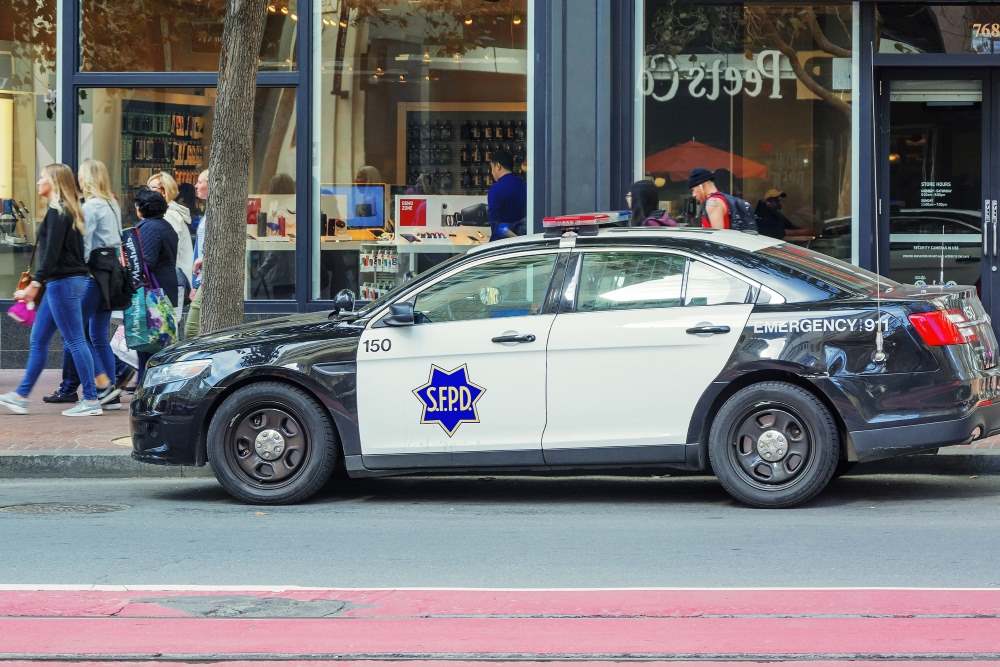Across America, some of our major metropolitan cities are facing a crisis created by their own politicians seemingly intent on destroying public safety, while chasing away both businesses and citizens. Unable to keep up with lost revenue, increasingly, we will see municipalities getting overstretched and facing collapse if course corrections are not made. This dire situation is analogous to the “death spiral” experienced by ant colonies.
Well-known for their self-organizing structure, ants search for food by following the ant in front of it. This behavior also allows them to find their way back to their nests. Sometimes a slight deviation occurs, typically caused by an environmental trigger, and an ant mill forms. When this happens, a group of ants will be separated from the main foraging party. If they lose track of the group’s pheromone trail, they will default to following one another, forming a continuously rotating circle. This circle is commonly known as a “death spiral” because the ants often die of eventual exhaustion.
In the case of the death spiral of our some of our major cities, its pathology can be broken down into four phases.
Phase One: Releasing More Criminals Will Make Us Safer
The beginnings of our large cities’ spiral of death can be traced back to 2001, when federal litigation was filed claiming that California’s state prison system was not providing sufficient medical care to its prison population. For a decade, several alternatives were attempted without success. In 2010, a three-judge panel found that California was not providing sufficient medical care to its current jail population and ordered the state to either increase prison capacity or reduce the prison population down to 137.5% of its designed capacity. The case was appealed and the U.S. Supreme Court affirmed the panel in a 5-4 opinion. Noteworthy were two dissenting opinions which argued that that the federal government should not be micromanaging state criminal proceedings, nor should it sanction the release of thousands of convicted criminals.
Over the next several years, the California legislature floated various bills in an attempt to reduce its jail population. In 2011, it passed AB 109, which moved certain convicted criminals from state prisons to county jails if the remainder of their sentences were 10-15 years in length for non-violent offenses. Unfortunately, because county jails were not designed for long-term housing, they became the subject of further litigation, with the claim that counties were not providing proper medical care for inmates who had been transferred from state prisons.
In 2014, California approved Proposition 47, which reclassified certain felony offenses to misdemeanors. Next, the district attorneys of certain metropolitan cities including Los Angeles and San Francisco, chose to no longer prosecute these offenses, including theft of less than $950. In 2016, Proposition 57, which allowed early parole consideration for some “nonviolent” felons, was approved in a further attempt to reduce the jail population.
Both left-wing and right-wing think tanks championed the changes in California. They argued that they would save taxpayers’ money, while the reduction of the state prison population would make California safer. While common sense would have strongly suggested that releasing more criminals would increase crime, a vocal chorus claimed that the opposite result was virtually guaranteed. While this was unfolding, other jurisdictions, including New York and Harris County, Texas, joined the push to enact soft on crime policies.
Phase Two: Pretrial Criminal Justice Reforms Paralyze Courts
The spiral of death of our urban areas next involved the push for changes to the release mechanisms used for pretrial detainees. There are three general types of release utilized in the United States. They are (1) the private industry (bail agents); (2) simple release, i.e., personal bond, zero bond or no bond; and (3) a full cash bond. The type of release has a significant impact on whether a defendant appears for court, with the private industry offering the highest appearance rate by a wide margin. Practically speaking, this means more defendants appearing for court more often, which allows cases to be resolved more quickly, decreasing backlogs, while providing justice sooner to victims.
Conversely, simple release has the lowest appearance rate. No matter what it is called – zero bail in California, release without bond in New York, or release on personal bond in Harris County, Texas – the results have been historically and consistently dismal. A high failure to appear rate means that a defendant’s criminal case must be put on hold until they return. As jails have increasingly filled-up with violent offenders, defendants have learned that there is no room for them on the property charges they are facing. In response, they see this as a green light to commit even more such crimes.
In California, New York and Harris County, Texas, the recent use of simple release has had the results that should have been anticipated and expected, with dramatically increased failure to appear rates. According to the former district attorney of Sacramento County and the current district attorney of Yolo County, California’s misdemeanor court failure to appear rates have increased to 80% once criminals realized that courts were stripped of their ability to do anything about it as a result of bail reforms. This should not be a surprise to anyone, considering the state’s prisons were already full, as were all its county jails as the result of AB 109. Not only is there no willingness to hold defendants accountable if they are arrested, there is no ability to do so – there is simply no place to put low-level career criminals anymore.
In Harris County, Texas, a review of two years of data demonstrated that the average failure to appear rate for defendants on personal bonds in misdemeanor courts was over 80%. In addition, more than 90% of misdemeanor cases that were disposed of in the month of August 2022 were dismissed, according to the county’s report.
Meanwhile, in New York state, a defendant publicly professed his love for bail reform since he had been arrested over 80 times and was released each time without consequences.
A lack of consequences has led to a rise in recidivism rates – the same individuals are committing a growing number of crimes because they are not being punished by the system. Accordingly, we are seeing a spike in crime across the spectrum of both felony and misdemeanor cases.
Phase Three: Mass Shoplifting and Ensuing Societal Chaos
As the spiral of death continues, crime grows rapidly. Shoplifting increases to such an extent that retail stores begin closing in some of our largest cities. In 2014, once California decriminalized theft for amounts less than $950, career criminals, gangs and organized crime saw this as a green light to take whatever they wanted. Two years ago, Target announced it was closing its San Francisco store due to unsustainable shoplifting, with the SFPD reporting that it was losing $25,000 a day. Other Bay Area retailers have since followed suit, including Nordstrom, Old Navy and Whole Foods. The list of retail stores closing is growing, not decreasing.
In other states, simple release strategies coupled with a push to “defund the police” created such chaos that the result was essentially the same. In New York, police blamed bad bail reform as the source of their own shoplifting outbreaks. Last June, a defendant in Manhattan was arrested for the 122nd time and released, yet again, under the city’s simple release policy. In January of the same year, Rite Aid closed its store on the Upper East Side because of unsustainable shoplifting and also announced that it would be closing 63 other locations. Starbucks announced last July that it was closing 16 stores in Portland, Los Angeles, Philadelphia, Washington, DC and its hometown, Seattle, citing safety concerns.
According to a New York Post story, a Rite Aid employee explained, “They come in every day, sometimes twice a day, with laundry bags and just load up on stuff. They take whatever they want and we can’t do anything about it. It’s why the store is closing. They can’t afford to keep it open.” The Post also wrote that the retailer had lost $200,000 worth of merchandise over a two-month period. NYPD Commissioner Dermot Shea blamed bail reform laws for the city’s crime wave.
In jurisdiction after jurisdiction, decriminalization strategies were repeatedly attempted, but all yielded the same poor results. Basically, releasing more criminals has caused an increase in crime. Relaxing the terms of pretrial release was like waving the starter’s flag at NASCAR and organized crime, gangs and career criminals have taken off racing to see who can steal the most. The practice of simple release has created chaos that has prevented courts from doing their jobs or holding defendants accountable.
Phase Four: The Final Death Loop AKA Bankruptcy
The final phase of the spiral of death involves the cataclysmic impact that soft on crime policies have had on local businesses, property values, and commercial lease space. This fourth phase sees businesses unable to provide a safe working environment for employees. For example, staffers working in San Francisco’s Nancy Pelosi Federal Building were told recently to work from home indefinitely because crime in the area had created an unsafe travel environment for employees.
In recent years, major cities, where businesses were smashed and broken as a result of various protests (or riots, depending on one’s choice of terminology), some argued that it was “only property damage,” and that any losses were insured. However, the reality proved something different entirely. Many locally owned businesses did not rebuild. Property owners who decided to sell suddenly found their property had fallen greatly in value. And as crime continued to increase, businesses began to close. In the meantime, municipalities and states are behaving as if they don’t care, but they should. Badly needed revenue from property taxes will be severely impacted by the widespread societal decline.
This last phase sees enormous pressures placed on commercial property owners. San Francisco’s commercial occupancy rate currently sits at 31.8%. Other urban areas are witnessing a similar mass drop in commercial property occupancy. Some experts have declared that it will be at least a decade before certain urban centers are able to attract a new major commercial tenant because of lax criminal justice policies. At the current rate, projected commercial property defaults will overwhelm cities in the next few years and will cause the demise of our once great urban communities. This “urban doom loop,” as coined by a Columbia University professor, will lead to reductions in city services because of the loss of property values and income tax revenue.
Is there any sign that the spiral of death for some of our largest metropolitan cities can be reversed? There are several positive signs which show a glimmer of hope. In Oakland, California, the local chapter of the NAACP and a pastor, issued a letter in July, blasting local officials and demanding a state of emergency to stop runaway crime. The Alameda County district attorney responded, arguing that the local NAACP and pastor were repeating a false narrative. However, the regional NAACP came forward shortly thereafter in support of the local chapter.
Also in July, NewsNation held a national town hall on Crime in America. On the issue of bail reform, Mayor Elaine O’Neal, of Durham, North Carolina – a former judge – stated she is not convinced bail reform can work without a viable alternative to get people to show up to court. She added that until another means is found that has the same effectiveness as the private industry, then there is no real alternative.
Some of America’s largest cities are currently caught in an ever-tightening death spiral of their own creation. At its crux is public safety, a complex issue that involves not only who goes to prison, but what crimes should be prosecuted, and whether the public has faith in the criminal justice system. In the past five years, rising crime has had a negative impact on businesses, commercial leases and public safety. All these issues have a financial cost that impact a city’s ability to function long term. The challenge for our mayors and other local officials is to come up with solutions that will have a positive influence so that these municipalities will have the tax revenue to continue to provide services for its citizens. The failure to meet this crisis head on will put our cities at great risk in the coming years. The current course is not sustainable and will lead to the destruction of our largest cities unless a new course is set.











